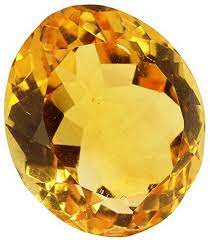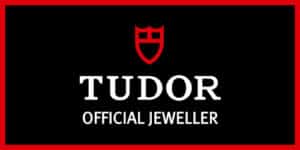November is a month illuminated by vibrant colors, from the brilliant yellows, oranges, and reds of the changing leaves to the glowing gradients of late autumn sunsets.
It makes sense then that November birthstones draw from this stunning palette and offer November babies (and anyone else, really) chic and elegant ways to wear the colors of the month.
The November birthstones are topaz and citrine. Although they may share a similar yellow hue and eye-catching sparkle in their natural state, they are actually two distinct stones, each with its own particular characteristics and meaning. Topaz also comes in a dazzling blue variety, which tends to be more popular in jewelry.
Each of these stones capture light in a way that offers a subtle but eye-catching effect. Both topaz and citrine look gorgeous on most skin tones and work equally well in gold, white gold, and silver settings.
But there’s more to these stones than what they look like. Let’s dive into the meanings behind the November birthstones of topaz and citrine and explore some of the best ways to wear them.
Topaz
For a long time, “topaz” was used as a  blanket term to describe virtually all yellow stones. The word comes from the ancient Mediterranean island of Topazios (it goes by St. John’s Island these days), which was famous for producing vast amounts of yellow gemstones.However, Brazil is the main producer of high quality topaz, although there are topaz suppliers from a handful of other countries as well, including Pakistan, India, Sri Lanka, Germany, and Mexico.
blanket term to describe virtually all yellow stones. The word comes from the ancient Mediterranean island of Topazios (it goes by St. John’s Island these days), which was famous for producing vast amounts of yellow gemstones.However, Brazil is the main producer of high quality topaz, although there are topaz suppliers from a handful of other countries as well, including Pakistan, India, Sri Lanka, Germany, and Mexico.
It’s ironic that topaz has become synonymous with a specific color, since pure topaz actually has no hue. It only takes on color when impurities are introduced into the stone, and those impurities can produce every shade under the sun.

Today, most topaz jewelry comes in two main colors: yellow and blue. The yellow version is visually similar to the other November birthstone of citrine and the two are often mistaken for one another. Imperial topaz is notable for its striking orange color rounded out with undertones of pink. It’s also the rarest form of topaz and at one time was only available to Russian royalty. The blue version is gaining popularity within the world of jewelry for its visual appeal and durability.
Topaz measures an 8 on the Mohs scale, just two levels down from the diamond, which has a hardness of 10. Although topaz is considered very strong, it also has “perfect cleavage,” which means it can be easily split in two. A quality jeweler will know to take extra care when fashioning topaz jewelry to cut it correctly so that it stands up to everyday wear and tear without chipping or cracking.
History and Meaning of Topaz
While historical texts dating as far back as ancient Greece will yield many mentions of topaz, because of the confusion around the word itself, it’s uncertain if they were referring to genuine topaz or to other yellow gemstones.
Things start to get a little clearer by the time of the European Renaissance, when topaz was seen as a powerful spell-breaker and cure for anger. In India, Hindus counted it among their sacred stones, believing it imparted wisdom and longevity to those who wore it as a pendant. Shamans in Africa held a similar view of topaz and included it as part of their rituals for healing.
After large deposits of topaz were discovered in Brazil in the 1800s, the stone experienced an explosion of popularity, thanks to its availability and affordability. In recent times, it has become the official gemstone of two states: Utah and Texas.
Modern-day gem and crystal enthusiasts use topaz for a wide variety of energetic purposes, from balancing emotions to stoking creativity. It is even thought to be able to aid digestion and promote restful sleep.
In addition to being a November birthstone, topaz is also linked with the astrological signs of Scorpio and Sagittarius, as well as people born on Fridays and Sundays.
Citrine
 Citrine comes from the French word for lemon, which is fitting for this bright, cheerful stone.
Citrine comes from the French word for lemon, which is fitting for this bright, cheerful stone.
As a variety of quartz, citrine ranges in color from sunny canary yellows to deep honeys and warm butterscotch. It gets its distinctive yellow shading from traces of iron within the crystal.
Most citrine comes from Brazil, although other major suppliers of this stone include Spain, Bolivia, France, Russia, and Madagascar. There are even citrine deposits right here in the US in Colorado, North Carolina, and California. The shade of a particular citrine stone will vary depending on the geography it originates from.
Because of citrine’s ability to withstand scratches and other kinds of wear and tear (it has a hardness of 7 on the Mohs scale), jewelers love using it in large, statement-making pieces that are meant to be worn prominently and frequently.
History and Meaning of Citrine
The popularity of citrine stretches as far back as ancient times, but the word “citrine” didn’t come into use until the 14th century. Before then, it was known by many other names, including gold topaz, Madeira topaz, and Spanish topaz, despite being unrelated to “true” topaz.
Citrine has been prized throughout history for its healing and abundance-attracting properties. Various cultures have used citrine as a stone to dispel anger and soothe inflamed tempers as well as attract prosperity. Citrine stones have been carried as personal talismans, worn on rings, and been inscribed with sacred symbols.
Today, spiritual and new age practitioners continue to harness the characteristics of citrine for personal and spiritual development. It is associated with the sun and with the solar plexus chakra, and many people believe that carrying a citrine can help awaken confidence and boost your sense of personal power. Aries, Geminis, Leos, and Libras may feel a special affinity for this stone as these are the astrological signs that are linked with citrine.
The Best Ways to Wear November Birthstones
Topaz is incredibly versatile and looks great in a variety of gemstone shapes. It’s a stone with a high brilliance factor — round, princess, and modern cuts bring this out to maximum effect.
Topaz also works well in both small and large sizes, so whether you prefer jewelry that’s subtle or flashy, there’s a topaz piece to suit your taste, from understated stud earrings to an attention-grabbing tennis bracelet.
When considering pairings, blue topaz is seen most often with metals such as platinum and silver that match its cool tones. However, it can also be paired with yellow and rose gold for a classy, retro vibe. Yellow topaz, of course, is right at home with gold and white gold.
Citrine is similarly versatile. It looks gorgeous in large pendants that capture the glowing, ethereal qualities of the stone. It also looks fantastic in a smaller, finer setting that veers more classic and sophisticated.
If you’d like to pair a yellow topaz or citrine with a complementary stone, try looking for options in colors from the opposite end of the color wheel, such as a purple amethyst. The deep red of a garnet or ruby is also a fantastic way to offset the warm yellow hue of a topaz or citrine.
How to Clean Topaz and Citrine Jewelry
A simple cleaning routine is all that’s needed to keep your topaz and citrine jewelry looking fabulous for years to come.
Never use chemicals to clean topaz or citrine. This includes dedicated jewelry cleaning products, since they often contain strong ingredients that can damage these stones. Steam cleaning and any other form of heat cleaning are also not advised, since exposure to intense heat can actually change the coloring of the stones.
A quick dunk in warm, soapy water is enough to keep your November birthstones looking like new. Just pat them dry with a soft cloth and remove any stubborn grime or debris with a soft-bristled toothbrush.
Topaz and Citrine Dos and Don’ts
Topaz and citrine are elegant enough for special occasions and versatile enough to wear day to day. So no matter if you wear these November birthstones as a ring, pendant, earrings, or bracelet, you’ll likely be accessorizing with them on a frequent basis.
To preserve the beauty of your jewelry, here are some important dos and don’ts to keep in mind.
Do: Store topaz and citrine in a jewelry box to reduce light exposure and prevent fading.
Do: Place topaz and citrine in soft velvet pouches to prevent scratches.
Don’t: Wear topaz and citrine rings and bracelets on your dominant hand as there’s a greater likelihood of knocking them against hard objects, which can cause chips and cracks.
Don’t: Apply cosmetics, lotions, perfumes, or hand sanitizer while wearing topaz and citrine. These products contain chemicals that can impact the stones. Put your jewelry on after your hair and makeup are done.
Browse Our Collection of November Birthstone Jewelry
Find the perfect piece of topaz or citrine gemstone jewelry to gift or add to your collection. A Brinker’s associate can help you navigate our luxurious collection of fine jewelry.
















